Tourists are evacuated from the Palace of Versailles because a fire breaks out in the roof
A fire has broken out at France’s historic Palace of Versailles on the outskirts of Paris, prompting staff to order a mass evacuation of tourists.
Images shared on social media showed trails of white smoke coming from the roof of the immense 17th-century palace, located in the city of the same name, some 16 kilometers from the heart of the French capital.
French media reported that a fire alarm went off in one of the buildings and alerted staff who immediately called emergency services.
Firefighters responded to the castle early this afternoon to extinguish the blaze as tourists and staff left the legendary building and poured into the extensive gardens surrounding it.
Footage showed hundreds of restless visitors flooding the courtyard outside one of the buildings as firefighters entered the building to locate and extinguish the flames.
Images shared on social media showed trails of white smoke coming from the roof of the immense 17th-century palace, located in the city of the same name, some 16 kilometers from the heart of the French capital.
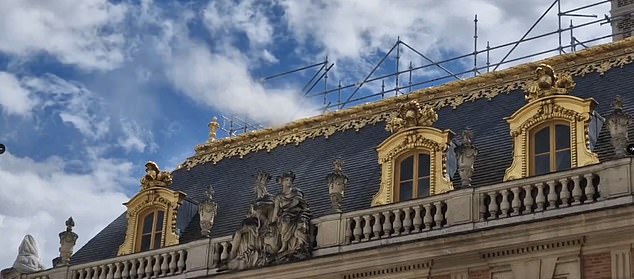
Hundreds of tourists and staff were evacuated from the palace
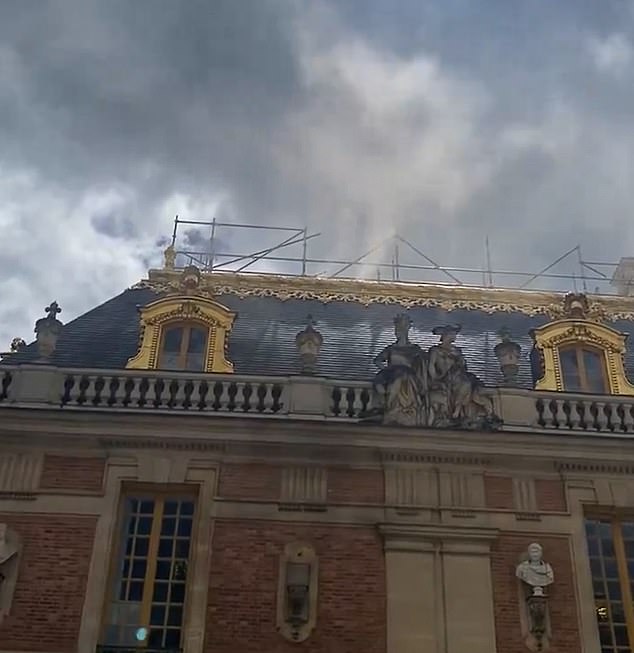
White smoke is coming from the roof of the palace this afternoon

An aerial photo taken on April 28, 2021 shows the Royal Chapel after its renovation at the Chateau de Versailles (Palace of Versailles) in Versailles, on the outskirts of Paris

A general view of the famous Hall of Mirrors in the Palace of Versailles near Paris
A palace spokesman confirmed at 3.30pm that a fire had broken out, but said firefighters had managed to extinguish the blaze.
“Firefighters came. There is no more smoke, no more flames and no damage to the collection.
‘The incident was quickly brought under control and the public was evacuated for safety reasons.
“The castle and gardens are now open,” the statement said.
Built in the 17th century for King Louis XIV, the palace was the main royal residence until the French Revolution and the overthrow of the monarchy in 1789.
It is one of France’s most popular tourist destinations, along with the Eiffel Tower, Notre Dame and the Louvre, among others.
Notre Dame itself suffered a devastating fire in 2019 that destroyed its roof and required a massive renovation project that is still underway.
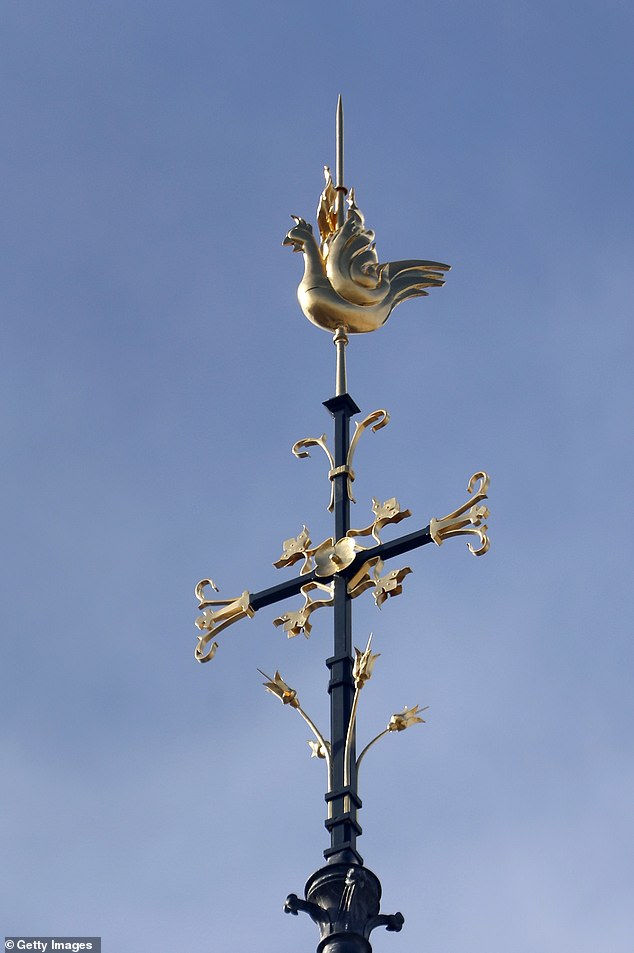
Notre Dame’s new spire was seen for the first time in February. The spire is decorated with a golden rooster and cross
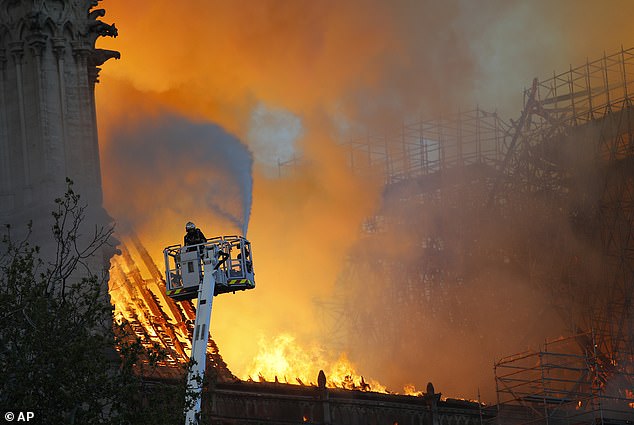
Notre Dame Cathedral was destroyed by fire in April 2019 and French President Emmanuel Macron vowed to rebuild the cathedral
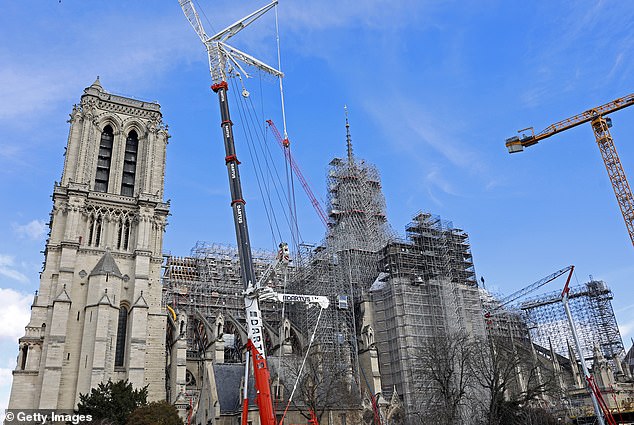
Scaffolding has been removed from the top of the Gothic cathedral
In February this year, workers unveiled the cathedral’s new spire for the first time: a golden rooster atop a cross that resembled a phoenix rising from the ashes.
Designers said the new spire, which was installed in December, symbolizes resilience and renewal.
In April 2019, French President Emmanuel Macron promised to rebuild Notre Dame after fire destroyed the famous Catholic cathedral.
The 100-metre-high Gothic spire collapsed early in the coal fire and much of the building, a UNESCO World Heritage Site, was destroyed.
Cathedral officials said the spire alone was protected by around 70,000 scaffolding – a staggering 600 tonnes in total – before its unveiling in February.
An anti-fire fogging system has also been implemented under the roof of the cathedral and the original cross has been recreated.
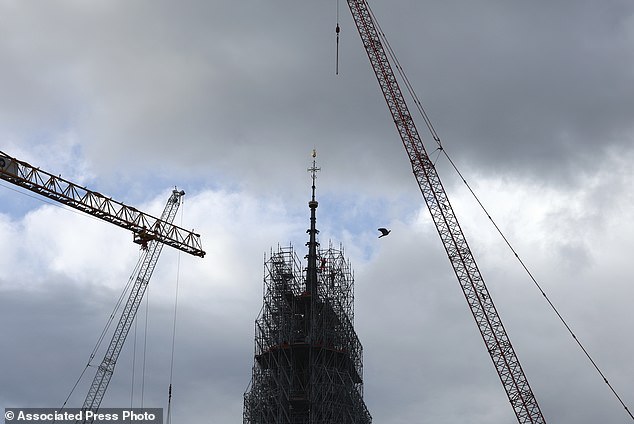
The 90-metre-high Gothic spire collapsed early in the coal fire and much of the UNESCO World Heritage building was destroyed
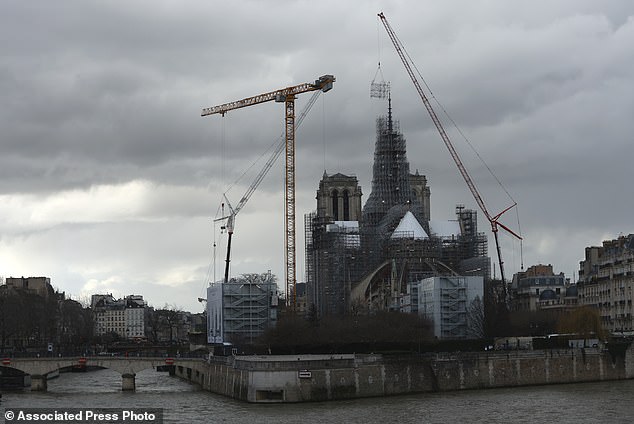
Other restoration efforts include an anti-fire fogging system under the cathedral’s roof and the original cross has been recreated
A resident of the cathedral, Frederico Benani, who witnessed the fire five years ago, felt emotional seeing the new spire.
He said, ‘I can open the window in the morning. I see Notre Dame. I see the spire – to me it is beautiful and much better (than) before. It gives us hope.’
Notre Dame still stands surrounded by scaffolding as builders work fervently to meet its planned December 8 reopening date.
It was initially hoped that the iconic monument would be ready to receive tourists again during the Paris Olympics in July and August, but the extent of the damage made the renovations simply too complex.
